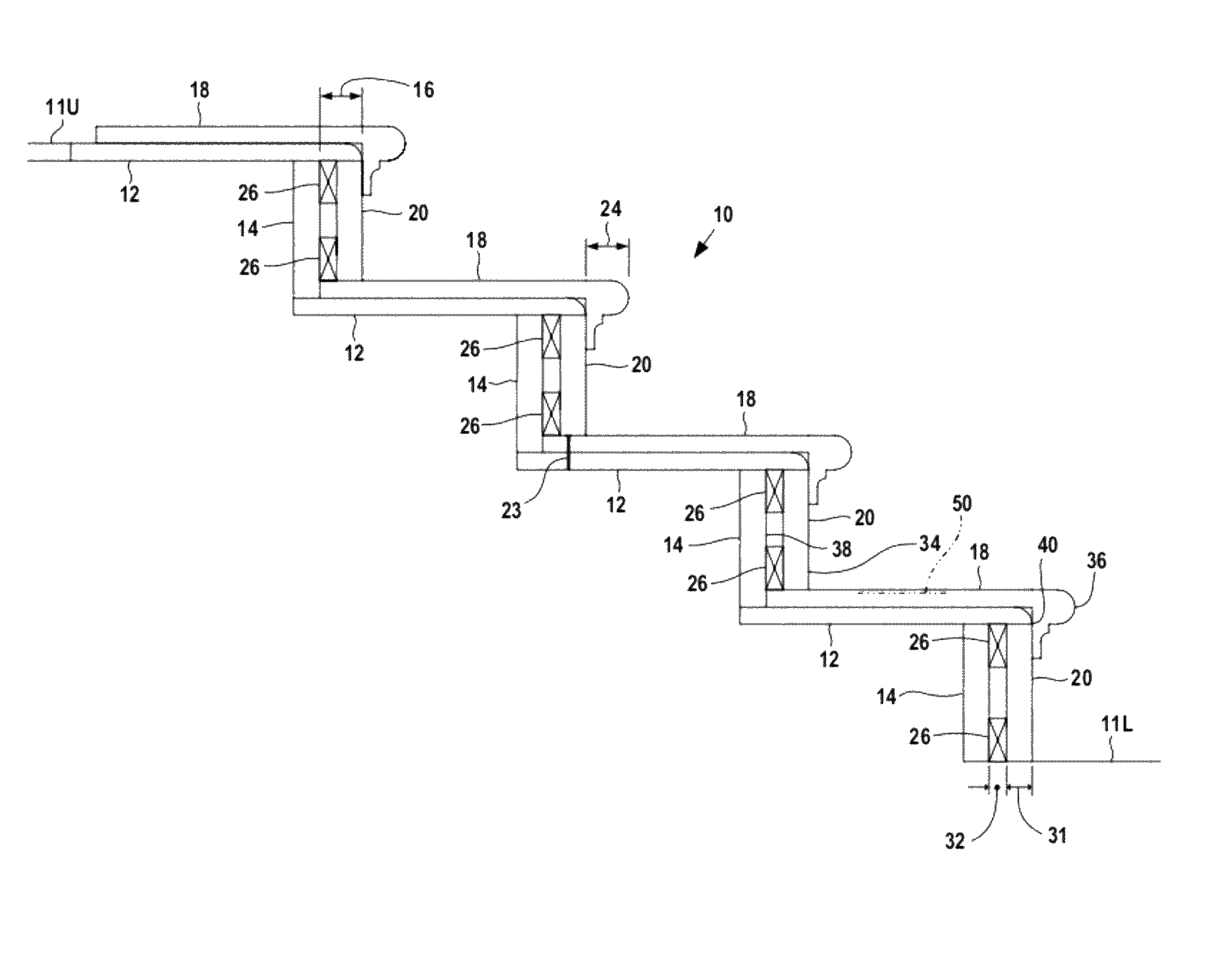Method of refacing a staircase
a technology for refacing and stairs, applied in the field of stairs, can solve the problems of staircases that do not comply with building codes, require skilled labor familiar with staircase construction, and are expensive, and achieve the effect of keeping the house interior clean
- Summary
- Abstract
- Description
- Claims
- Application Information
AI Technical Summary
Benefits of technology
Problems solved by technology
Method used
Image
Examples
Embodiment Construction
[0030]FIG. 1 illustrates a refaced residential staircase 10. Any previously applied carpeting or additional flooring materials were removed from the staircase prior to refacing. The staircase extends between a lower landing 11L and an upper landing 11U, and includes a number of original treads 12 and original risers 14. In the illustrated embodiment each tread 12 overhangs a riser 14 by a distance 16 of one inch.
[0031]The staircase 10 has been refaced using a number of like replacement treads 18 and like replacement risers 20. FIG. 2 is an enlarged view of a single replacement tread 18.
[0032]Each replacement tread 18 is placed on and supported on a respective original tread 12. The back end 22 of the replacement tread 18 butts against the original riser 14 with the replacement tread 18 overhanging the original tread 12 by a distance 24 of one inch, that is, the replacement tread 18 overhangs the original tread 12 by the same distance the original tread 12 overhangs the original rise...
PUM
 Login to View More
Login to View More Abstract
Description
Claims
Application Information
 Login to View More
Login to View More - R&D
- Intellectual Property
- Life Sciences
- Materials
- Tech Scout
- Unparalleled Data Quality
- Higher Quality Content
- 60% Fewer Hallucinations
Browse by: Latest US Patents, China's latest patents, Technical Efficacy Thesaurus, Application Domain, Technology Topic, Popular Technical Reports.
© 2025 PatSnap. All rights reserved.Legal|Privacy policy|Modern Slavery Act Transparency Statement|Sitemap|About US| Contact US: help@patsnap.com


